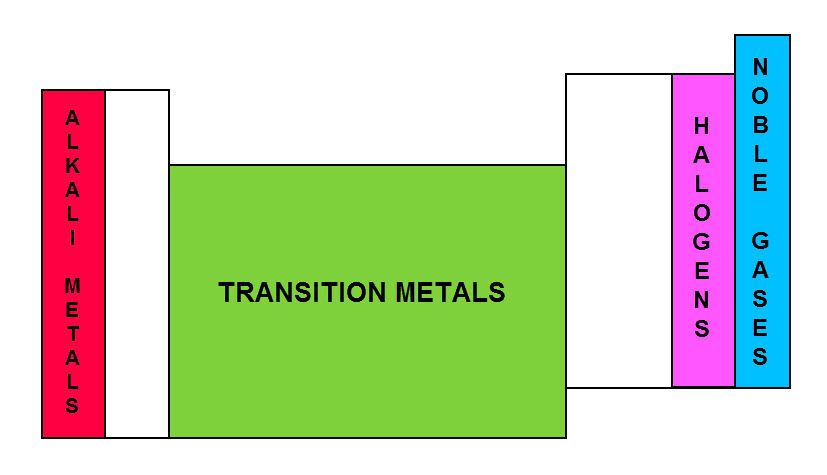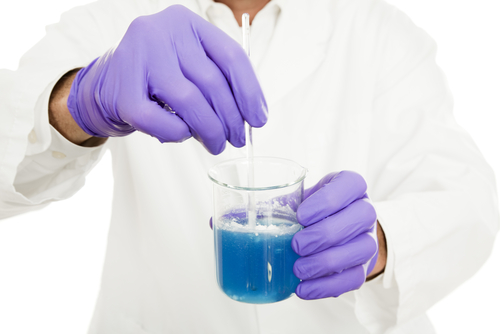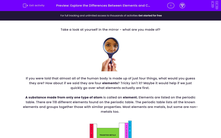Take a look at yourself in the mirror - what are you made of?

If you were told that almost all of the human body is made up of just four things, what would you guess they are? How about if we said they are four elements? Tricky isn't it? Maybe it would help if we just quickly go over what elements actually are first.
A substance made from only one type of atom is called an element. Elements are listed on the periodic table. There are 118 different elements found on the periodic table. The periodic table lists all the known elements and groups together those with similar properties. Most elements are metals, but some are non-metals too.

So does that help you now - what four elements do you think make up over 96% of the human body? Well, the four elements that make up most of the human body are oxygen, carbon, hydrogen and nitrogen. A few more extra elements are needed in smaller amounts. Oxygen alone makes up more than half the mass of your entire body! We need all of these elements for our bodies to work.
However, we aren't quite as simple as that statement makes out. These four elements are often combined together to make important chemical compounds that our body needs, like sugars.
A compound is a substance that is made from more than one type of atom - it is made from two or more different elements chemically bonded together. Some examples of compounds are water, ethanol and carbon dioxide. A compound is different to a mixture, because the atoms in a compound are chemically bonded together. In a mixture, the substances are not chemically bonded together - they are easy to separate back into the initial substances as a result.

Let's take a look at some of the elements that play such a big role in our bodies, and how they can combine to make the useful compounds we need too.








